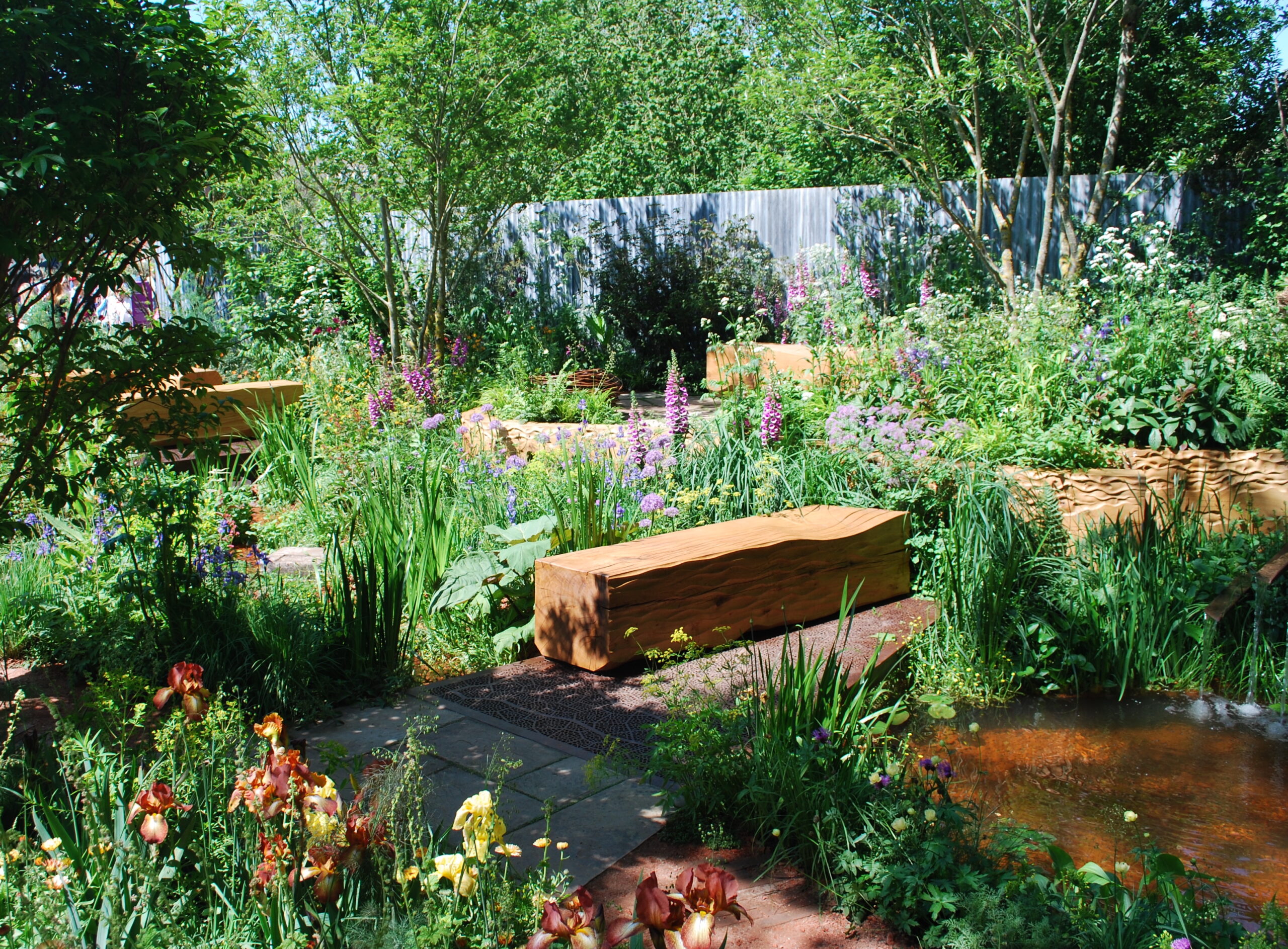The Importance of Urban Green Spaces: Celebrating Octavia Hill and the RHS Chelsea Flower Show

Warm, welcoming palette in warm shades such as yellow yarrow (Achillea millefolium ‘Credo’) rusty-toned irises (‘Kent Pride’) and yellow/brown Iris ‘Rajah’ echo the hue of the wildlife pond.
Being in green spaces, whether in woods, park, or gardens, is proven to improve mood, mental health, and emotional wellbeing. Research from the University of Exeter shows positive impacts including reducing stress, fatigue, anxiety, and depression, boosting immune systems, encouraging physical activity, and possibly reducing the risk of chronic diseases such as asthma. It can combat loneliness and bring communities together.
Ahead of her time, Octavia Hill (1838-1912) believed that ‘the healthy gift of air and the joy of plants and flowers’ were essential for everyone. A social housing revolutionary, she campaigned and took practical action to create good-quality, affordable housing for society’s poorest. However, her vision extended beyond the four walls of a home, and she originated the concept of ‘open-air sitting rooms,’ which are popular in many gardens today, as a believer in ‘the life-enhancing virtues of pure earth, clean air, and blue sky.’
Octavia also fought for the preservation of the countryside and was a founder of the National Trust, helping to buy and protect its first land and houses. She campaigned for the preservation of footpaths to enable access to the land for everyone. This year’s RHS Chelsea Flower Show features a garden that celebrates her legacy based on the idea that if she were alive today, she would prioritize access to nature for urban communities.

Wheelchair-accessible paths lead between the outdoor rooms, past drifts of plants in sunny shades, to tree-shaded areas with specimens in cooler tones. Along the way, seating made of reclaimed wood and low-carbon concrete invite visitors to spend time together
The Octavia Hill Garden at the RHS Chelsea Flower Show
Winning a silver-gilt show medal and the first Children’s Choice Award, the garden is conceived as an urban community wildlife garden on a brownfield site, built as a series of rooms where visitors can experience different views and atmospheres. Seating made of reclaimed wood beneath trees encourages sitting and socializing. Swaying grasses bring movement and gentle, calming sounds, as does a trickling streamlet and three soundscapes based on plants’ electrical impulses, birdsong, and human speech. Bird-boxes hang from the trees, and the retaining wall has wildlife habitat panels. The color scheme mainly consists of oranges, golds, and yellows, and blues, purples, and lilacs for contrasting moods.
The garden was created by award-winning designer Ann-Marie Powell, with garden centers Blue Diamond selling a plant collection based on the garden in collaboration with the National Trust.
You can still visit a couple of Octavia Hill’s gardens in London: Red Cross Garden, near Borough Market; St George’s Gardens, near St Pancras station. Postman’s Park, near St Paul’s Cathedral, saved by her, has touching plaques to people who sacrificed their lives for others.

The Octavia Hill Garden at the RHS Chelsea Flower Show
Access to Outdoor Space
Unfortunately, the work of campaigners like Octavia Hill is still necessary. One in three people in Britain lacks access to a natural green space within a 15-minute walk from home. The importance of urban green spaces is so significant that a government inquiry into urban green space provision began last fall.

Photo: RHS.org.uk
What You Can Do
Imagine a city block with bare balconies or a street where front gardens have become car parks. Now envision bursts of color, leafy growth, and life in these spaces. Plants have a way of flourishing by themselves, sprouting in unexpected places like railway tracks or roadside verges.
No matter how small your garden, balcony, or windowsill is, growing plants will benefit you, those around you, and the environment. By creating a small green space, you can support the need for urban greenery and contribute positively to your community and ecosystem.

The joy of plants and flowers
Adrienne Wyper is a health and lifestyle writer and regular TNMA contributor.
Read the growth of women who garden HERE.




